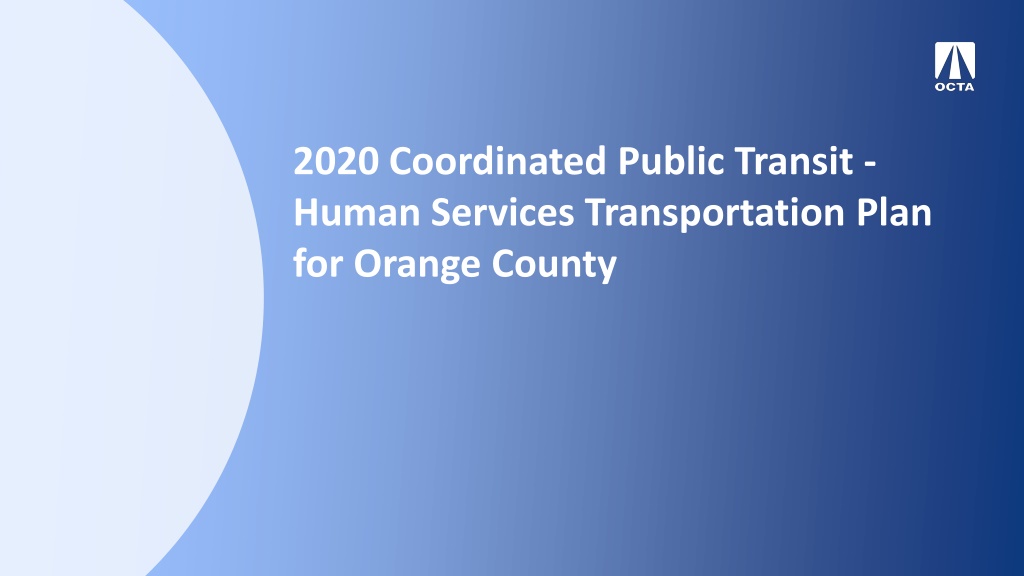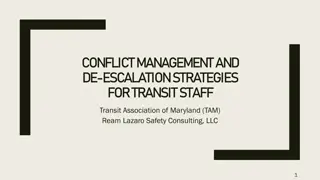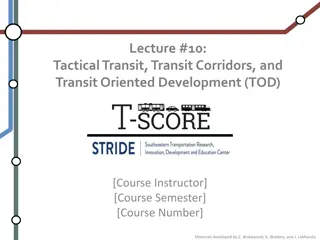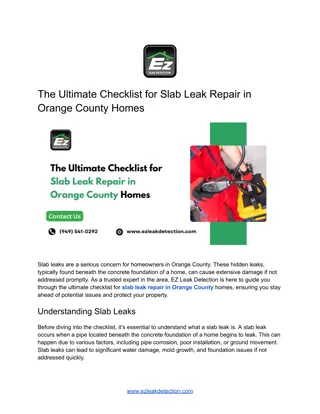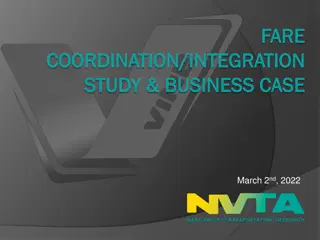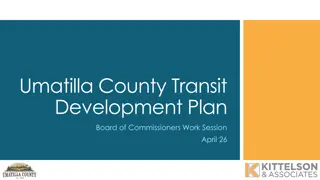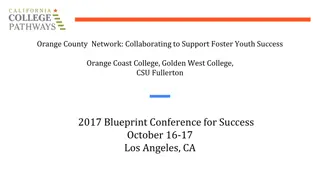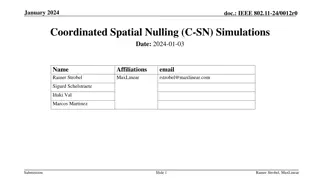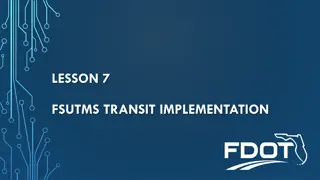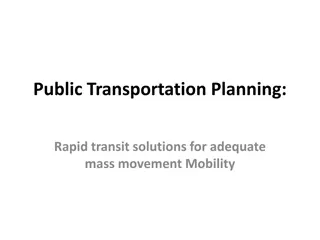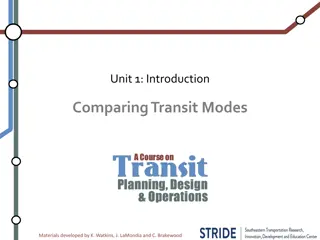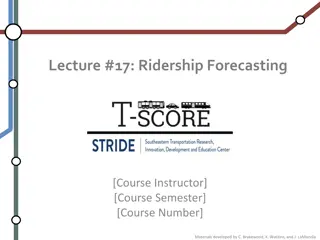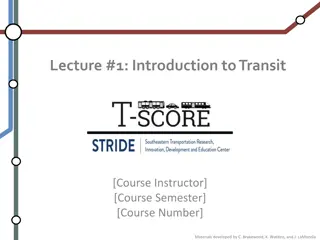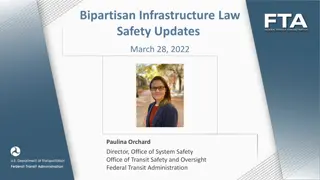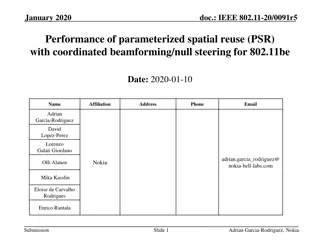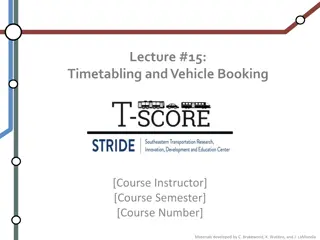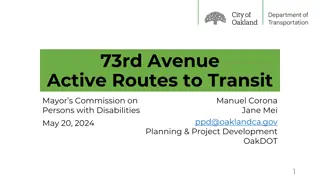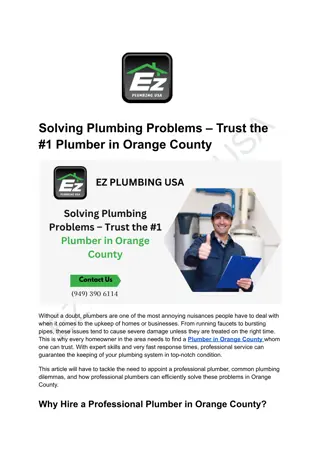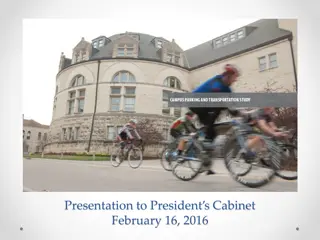Orange County Coordinated Public Transit & Human Services Plan 2020
The Orange County Transportation Authority (OCTA) has developed a Coordinated Public Transit & Human Services Plan that must be updated every four years. The plan includes assessments of available transportation services and needs, strategies to address gaps, and priorities for implementation. Objectives aim to ensure plan consistency with federal law, guide funding prioritization, facilitate stakeholder participation, update inventories, and coordinate services. Public outreach involves engaging with stakeholders, including the Special Needs Advisory Committee. Program goals focus on restoring specialized transportation networks post-COVID-19, leveraging information for enhanced mobility, and improving infrastructure. Specific strategies include supporting OC ACCESS, integrating transit options, providing on-demand services, and enhancing safety through technology.
Download Presentation

Please find below an Image/Link to download the presentation.
The content on the website is provided AS IS for your information and personal use only. It may not be sold, licensed, or shared on other websites without obtaining consent from the author. Download presentation by click this link. If you encounter any issues during the download, it is possible that the publisher has removed the file from their server.
E N D
Presentation Transcript
2020 Coordinated Public Transit - Human Services Transportation Plan for Orange County
WHAT IS THE OCTA COORDINATED PLAN? Must be updated every four years. Four required elements: 1. Assessment of available transportation services (public, private, and nonprofit); 2. Assessment of transportation needs for target individuals; 3. Identifies strategies, and/or projects to address the identified gaps between current services and needs, as well as opportunities to achieve efficiencies in service delivery; and 4. Priorities for implementation based on resources, time, and feasibility. OCTA Orange County Transportation Authority 2
OCTA COORDINATED PLAN OBJECTIVES Ensure plan consistency with the transportation coordination requirements of federal law; Guide prioritization of Federal Transit Administration Section 5310 funding within Orange County over the next four years; Facilitate stakeholder participation in the transportation coordination discussion and planning process; Update the inventory and directory for public transit human services transportation; and Devise a program to coordinate and implement public transit human services transportation. 3
PUBLIC OUTREACH Meet with project team and SNAC Stakeholder survey Interviews with cities, human service agencies/organizations Video conference meeting SNAC - Special Needs Advisory Committee 4
PROGRAM GOALS 1. Restore and enhance the specialized public transportation network to meet the needs of the target populations in a post-coronavirus environment. 2. Rebuild specialized services for target populations. 3. Leverage transportation information to enhance mobility - measure outcomes. 4. Improve and expand external and internal mobility infrastructure. 5
GOAL #1 Restore and Enhance the Specialized Public Transportation Network to Meet the Needs of the Target Populations in a Post-COVID-19 Environment Strategies: 1.1: Continue to support the capital costs, operations, and maintenance of OC ACCESS. 1.2: Transit integration with flexible transportation options to meet first/last mile needs. 1.3: Reliable on-demand taxicab services for disabled persons: Strong potential to be funded and implemented over the life of the Plan (four years). 1.4: Improve safety and access to services for target populations through technology. 6
GOAL #2 Re-build Specialized Services for Target Populations Strategies: 2.1 Continue to fund maintenance and purchase of vehicles for specialized transportation providers. 2.2: Continue to support transportation services for low-income transit- dependent populations. 2.3: Prioritize services in areas that are underserved or have gaps in services. 2.4: Promote coordination between agencies and organizations that provide special needs transportation. 7
GOAL #3 Leverage Transportation Information to Enhance Mobility - Measure Outcomes Strategies: 3.1: continue progress towards the use of technology by target populations to access travel information, schedule rides and travel training. 3.2: Support participation in 211 Community Information Exchange (CIE). 3.3 Institute program measurement requirements. 8
GOAL #4 Improve and Expand External and Internal Mobility Infrastructure Strategies: 4.1 Identify bus stop and transfer locations needing physical improvements necessary for individuals with disabilities to access public transit. 4.2 Expand volunteer driver services to meet existing needs. 4.3 Expand non-profit mobility options using retired vehicles. 4.4 Explore shared use of grant-funded vehicles by grantees serving compatible needs. 4.5 Explore flexible use of funding to allow for non-traditional uses and users. 9
PRIORITIES-STRATEGIES Strategies proposed are designed to: Address identified gaps and barriers; Impact the highest number of members of the target populations; Make use of new technology in delivery of services as possible; and Strong potential to be funded and implemented over the life of the Plan (four years). 10
IMPLEMENTATION Maintain consistent community-focused interaction and involvement. Plan and participate with agency/organization partners. Evaluate each project/program as an important part of a collective whole. 11
NEXT STEPS Present Goals & Objectives to the Transit Committee (11/12/20) Finalize Report Based on Feedback Return to Board of Directors with Guidelines for Enhanced Mobility for Seniors and Disabled Grant Program (11/23/20) 12
QUESTIONS Thank you! 13
